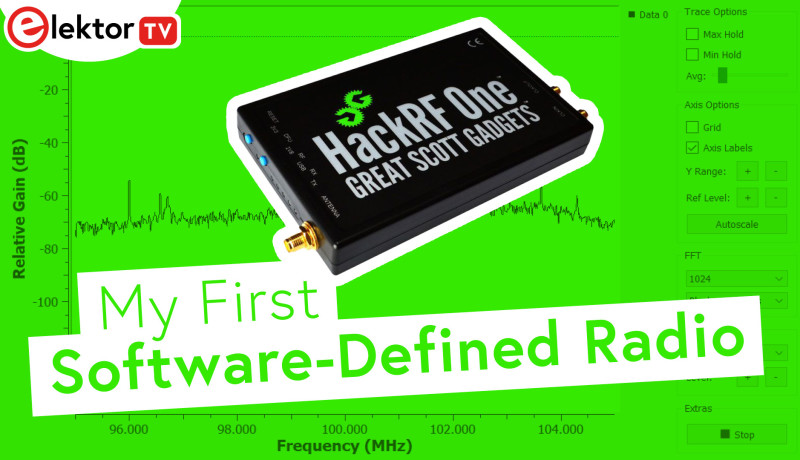Software Defined Radio – Build an FM Radio Receiver in Less Than 15 Minutes
November 27, 2022
on
on

Software-Defined Radio, also known as SDR, is about modulating and demodulating radio signals in software. Instead of having special electronic circuitry to do this, like a mixer or demodulator, SDR uses software. Of course, there is some hardware involved in turning analog signals into digital and vice versa, but that is all you need. This video explains how to build a software-defined FM radio receiver with a HackRF One input device and GNU Radio Companion for the software.
A second advantage of SDR is that you need only one piece of hardware to do all of this. You don’t need a separate FM receiver and a Wi-Fi receiver and a digital TV receiver and what not. SDR uses the same front-end for everything.
Finally, a lot of SDR-related stuff is open-source and open-hardware, created by a large community of enthusiasts. They design and publish schematics for front-ends and develop software tools and algorithms for SDR applications.
Advantages of SDR
SDR understands every modulation technique you can think of, and more. This means that with SDR you can not only listen to AM and FM radio, but you can also do Wi-Fi or Bluetooth or decode digital TV or DAB or HAM radio stuff. Whatever you like.A second advantage of SDR is that you need only one piece of hardware to do all of this. You don’t need a separate FM receiver and a Wi-Fi receiver and a digital TV receiver and what not. SDR uses the same front-end for everything.
Finally, a lot of SDR-related stuff is open-source and open-hardware, created by a large community of enthusiasts. They design and publish schematics for front-ends and develop software tools and algorithms for SDR applications.
Software-Defined Radio (SDR) Resources
Read full article
Hide full article


Discussion (0 comments)